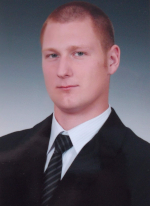Applied Embryology and Stem Cell Biology Group - Detailed - Institute of Genetics and Biotechnology
Applied Embryology and Stem Cell Biology Group
Applied Embryology and Stem Cell Biology Group - Detailed
Last modified: 17. September 2025
Research projects
- The examination of the expression patterns of development specific genes and microRNAs in mouse, rabbit and avian embryos and germ cells
- The effects of juvenile heat treatment and alternative protein sources on the chicken reproduction processes
- Founding a gene bank for native chicken breeds with primordial germ cell freezing
- Porcine zygote vitrification and development of in vitro embryo culture to establish ex situ gene conservation
Research projects:
- VEKOP (VEKOP-2.3.2-16-2016-00012)
- TKP (TUDFO/51757-1/2019-ITM)
- TéT (2019-2.1.11-TÉT-2019-00036)
- TéT (2019-2.1.11-TÉT-2019-00038)
- OTKA (NKFIH OTKA 132687)
- OTKA (NKFIH OTKA 135231)
- NETPOULSAFE (H2020-RUR-101000728)
- NL (RRF-2.3.1-21-2022-00007)
The examination of the expression patterns of development specific genes and microRNAs in mouse, rabbit and avian embryos and germ cells
Our group has been working on the creation of rabbit embryonic (ES) and inducted pluripotent (iPS) stem cell lines for a long time, cooperating with the team of Prof. Pierre Savatier (Inserm U846, Lyon) (Osteil, 2013, 2016; Tapponier, 2017). We examined the expression of mmu-mir-290-295 and mmu-mir-302-367 microRNA (miRNA) clusters in mouse stem cells (Lichner, 2011) and the expression of stem cell specific miRNAs in rabbit embryos and stem cells.
We examined the miRNA expression in various cell types of the 6-day-old rabbit embryos during the embryonic development. We assessed the expression of ocu-miR-302 and ocu-miR-290 miRNA clusters in the trophoblast, and in two cell layers of the embryoblast, the hypoblast and the epiblast.
We discovered that at the beginning of the embryonic development the expression of the ocu-miR-290 cluster is decisive, however after the fourth day of the embryonic development we found the expression of ocu-miR-302 cluster to be higher. Our examinations of comparing pluripotent stem cells showed that the expression of ocu-miR-290 cluster is responsible for keeping the epiblast cells in naïve stage (Maraghechi et al., 2013, Pendzialek, 2019). In avian species the gga-miR-302 miRNA cluster is highly responsible for regulating the proliferation rate of the primordial germ cells (PGCs) (Anand, 2018). In mammals the RAS-MEK-ERK, GSK3ß and TGFß signalling pathways play a role in identifying the rate of epiblast cells (OCT4 and SOX2 positive) and hypoblast cells (GATA6 positive, SOX2 negative). We determined that in rabbit embryos the inhibition of MEK resulted in a low rate decrease of the hypoblast cells, which suggests that the hypoblast formation is independent from the FGF. We also verified that the combined inhibition of both MEK and GSK3ß does not reduce the rate of hypoblast cells in rabbit blastocysts (Bontovics, 2020).
The effects of juvenile heat treatment and alternative protein sources on the chicken reproduction processes
Recently the extreme warm summers have been becoming more and more usual, which was suboptimal for the highly heat-sensitive modern poultry breeds. Due to the heat stress, huge economical losses were produced in the poultry industry, so modern molecular biology experiments became necessary to help us understand the physiological processes and immunological changes in chicken, promoting the production of poultry breeds with better adaptative abilities.
There is huge potential for using avian species as models. Since most of the embryonic development takes place outside of the mother’s body, we have the chance to study the embryo during its development.
The primordial germ cells (PGCs) give us the opportunity to study the avian germplasm, since the sperms and ova, which are the adult cells carrying and passing on the genetical information to the next generation, originated from these cells. The long-term in vitro culturing of avian PG cells gives us a great chance to understand their biology and it allows us to increase the number of the cells for gene preservation too. Furthermore, during the in vitro culturing, we can model external environmental effects, such as the effects of heat stress and toxins on the molecular level.
In case of poultry, the high ambient temperature has a negative effect on every production parameter, however using the optimal technology the tolerance against heat stress can be improved, so the fertility parameters, such as hatching rate can show an improving tendency even in long lasting warm weather. This research was made in cooperation with the team of Dr. Krisztina Liptói (NBGK-HGI), Dr. Eszter Várkonyi (NBGK-HGI), and Prof. Bertrand Pain (Inserm U846, Lyon). The goal of our research, related to the international scientific cooperation program (CGIAR Consortium CCAFS) called ‘Moderating the harmful effects of climate change and increasing adaptability in the agrarian’, was to examine the effects of heat treatment on the days following the hatching. We tried to find out, how heat treatment effects egg production, sperm quality and quantity, and embryo mortality in Speckled Transylvanian naked necked chicken, modelling the circumstances of a warm summer period.
The degradation of reproductive abilities was less in case of heat treatment, but in the heat-treated group the egg production and the rate of viable embryos were significantly higher after heat stress, than the ones with only heat stress (Anand et al, 2016). In the right gonad of the male embryos, we could witness a raised expression of HSP70 and miR-138. The stem cell specific markers showed a right/left asymmetry. At the beginning of the PGC culturing the HSP70 and miR-138 expression were low, but in parallel with the culturing the expression rate rose.
The quality of forage is crucial in animal husbandry, which can only be achieved with the appropriate combination of proteins and amino acids. Some components of the new forage compartments can affect the hormonal and reproductive system of the animals. In 2019 our institute started an experiment as a part of the Subject Excellence Program, which aimed to examine the effects of alternative food components on the endocrine system in mammal and avian embryos.
Founding a gene bank for native chicken breeds with primordial germ cell freezing
We work on the foundation of a primordial germ cell based native Hungarian chicken gene bank and the in vitro and in vivo characterization of these cells supported by the VEKOP grant led by Dr. Eszter Várkonyi (NBGK-HGI).
Nowadays, the protection and preservation of endangered species and breeds are important tasks. In case of mammals, the routine method for in vitro gene preservation is sperm freezing, however in avian species the whole genome cannot be conserved with this technique. This is caused by the fact, that in avian species the females are the heterogametic gender with Z and W sex chromosomes. Both male and female PGCs can be isolated and cultured successfully in vitro, so with PGC freezing we can preserve the female specific W chromosome too, therefore preservation of the whole genome can be achieved.
Our task was to characterize the isolated, in vitro cultured, and cryopreserved primordial germ cell lines with molecular genetic methods, immunostaining and proliferation measurement (Lázár, 2018; Anand, 2018).
In 2021, we were able to finish the establishment of the PGC-based gene bank for seven native Hungarian chicken breeds. In the near future, we intend to work on the Hungarian goose and guinea fowl gene banks. In parallel we started to experiment on GFP expressing PGCs. We used these fluorescently marked cells for finding the ideal recipient breed (Molnár, 2019; Lázár 2021; Lázár 2022).
Procine zygote vitrification and development of in vitro embryo culture to establish ex situ gene conservation
The aim of our research is to perform the in vitro embryo and tissue production and cryopreservation experiments required for the ex situ oocyte and fibroblast gene bank. We are working on the development of methods for the ex situ gene preservation of domestic pig breeds. In 2015, Dr. Bodó Szilárd created an efficient in vitro embryo production system for pigs for the first time in Hungary (Magyar, 2019). In 2022, Martin Urban adapted an efficient adult porcine fibroblast isolation protocol. Using this protocol, we successfully isolated adult porcine fibroblast cell cultures from ear tissues of Keszthely Large White pigs.
Group Members

|
Dr. Elen Gócza, scientific advisor, head of department, group leader Phone: +36-28/430-494 / 4150 E-mail: Gocza.Elen@uni-mate.hu |

|
Dr. Bence Lázár, research fellow, postdoc M.Sc.: Biologist, University of Veterinary Medicine Budapest, 2010-2013 |

|
Nikolett Tokodyné Szabadi, assistant research fellow, PhD student M.Sc.: University of Szeged, TTIK, Biologist, 2014-2015. |

|
Roland Tóth, assistant research fellow, PhD student M.Sc.: SZIU, MKK, Agricultural biotechnology, 2012-2014 |

|
Arnold Tóth, PhD student Phone: +36-28/430-494 / 4162 |

|
Jehan Nayga, PhD student Phone: +36-28/430-494 / 4162 |

|
Katalin Nagy, PhD student Phone: +36-28/430-494 / 4162 |

|
Árpád Mihalicza, MSc student E-mail: Mihalicza.Arpad@stud.uni-mate.hu |

|
Bognár Júlia, BSc hallgató E-mail: Bognar.Julia@stud.uni-mate.hu |

|
Sándor Egedi, research assistant Phone: +36-28/430-494 / 4253 E-mail: Egedi.Sandor.Zoltan@uni-mate.hu |

|
Edit Gubó, lab assistant Phone: +36-28/430-494 / 4253, 4152 E-mail: Gubo.Edit@uni-mate.hu |

|
Ágnes Udri, animal keeper Phone: +36-28/430-494 / 4263, 4213 E-mail: Udri.Agnes@uni-mate.hu |

|
László Fülöp, animal keeper Phone: +36-28/430-494 E-mail: Fulop.Laszlo@uni-mate.hu |
| Past: |
|
Collaboration
- Dr. Orsolya Hoffmann, PhD
- Dr. Zsuzsanna Szőke, PhD
- Dr. Lilla Bodrogi, PhD
- Dr. Szilárd Bodó, PhD

